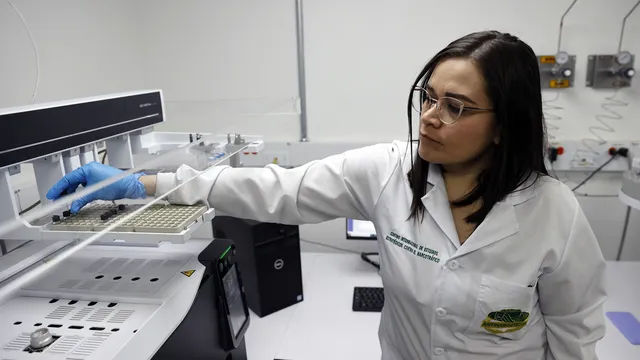A new study has found that microplastics made from a widely used biodegradable material can enter the metabolic cycle of bacteria and cells in the gut after ingestion.
Researchers from China and the US said the microplastics - made of polylactic acid - alter gut metabolism and damage the gut barrier in mice.
They reported that this may contribute to diseases such as inflammatory bowel disease and diabetes.
"This is the first time in the world that microplastics have been found to enter the body's metabolic cycle," said study co-author Cui Xuejing, an associate researcher at the National Center for Nanoscience and Technology of the Chinese Academy of Sciences.
In their paper, published May 5 in the peer-reviewed journal Proceedings of the National Academy of Sciences, the team wrote: "Biodegradable polylactic acid (PLA) plastics have been lauded as an effective solution to global pollution caused by petroleum-based plastics. Their widespread use in food packaging and disposable containers has led to increased oral exposure to PLA microplastics."
In recent years, microplastics have been found in human lungs, kidneys, blood, placenta and breast milk.
The research team said it is estimated that adults consume about 5 grams of microplastics a week from food, tap water, bottled drinks and containers, and babies ingest even more each week from pacifiers.
With limited success in reducing plastic use, biodegradable plastics are being used by many in an attempt to solve the plastic waste problem.
PLA - considered more environmentally friendly than conventional plastic because it is produced from renewable resources such as corn starch and sugar cane - has become the most commonly used biodegradable plastic in the world, found in food packaging, disposable cutlery and even clothing.
But few studies have been conducted on the effects of microplastics on the human body after ingestion - an important area of research given that PLA is more brittle than conventional plastics and breaks down into small particles more easily.
To investigate the effects of PLA microplastics on the body, a team from the Chinese Academy of Sciences, Sun Yat-sen University and Columbia University studied exposure in mouse models.
They found that ingested PLA microplastics are degraded in the gut by microorganisms, allowing them to be incorporated into the metabolic cycle of the gut microbiota and the protective epithelial cells that line the skin and organs.
The gut microbiota - specifically the bacteria Helicobacter muridarum and Barnesiella visceriocola - have been found to degrade PLA microplastics by secreting the enzyme esterase, which breaks down the ester linkages in microplastics.
When degraded microplastics are used as a carbon source in the metabolism of gut microbes, they become materials associated with diabetes and hyperuricemia, a condition in which there is an abnormally high level of uric acid in the blood, which can lead to gout and kidney stones.
In the intestinal epithelial cells of mice, microplastic fragments have been found to lead to reduced production of linear short-chain fatty acids, the main source of energy for the intestinal epithelium.
In mice that ingested the PLA microplastics, decreased appetite and weight loss was observed.
"Although it is unclear how gut microbes distinguish PLA, one likely reason is that frequent consumption of plastics through food and drink has habituated the gut microbiota to recognize and degrade these plastics," the paper said.
PLA microplastics can stimulate the growth of harmful bacteria such as Helicobacter muridarum, which can replace the microbes that ferment conventional dietary fiber, posing a risk to gut regulation and health.
Cui said current evidence suggests that damage caused by ingestion of PLA microplastics may be reversible six to 12 months after ingestion stops, but serious or prolonged ingestion could potentially cause irreversible damage.
She said there is currently no evidence that microplastics remain in the body forever, but it is recommended to be cautious and reduce exposure.
Qui noted that research on the safety of biodegradable plastics in the body is still at a relatively early stage and much more evidence is needed to confirm whether they have strong toxicity in the human body.
She said that because biodegradable plastics still appear to be better for the environment than conventional plastics, it is "too early to rethink the use of degradable plastics to replace traditional plastics." | BGNES
Ingestion of microplastics from biodegradable materials can lead to diabetes

BGNES
Researchers from China and the US said microplastics - made from polylactic acid - alter gut metabolism and damage the gut barrier in mice.


 Breaking news
Breaking news
 Europe
Europe
 Bulgaria
Bulgaria





